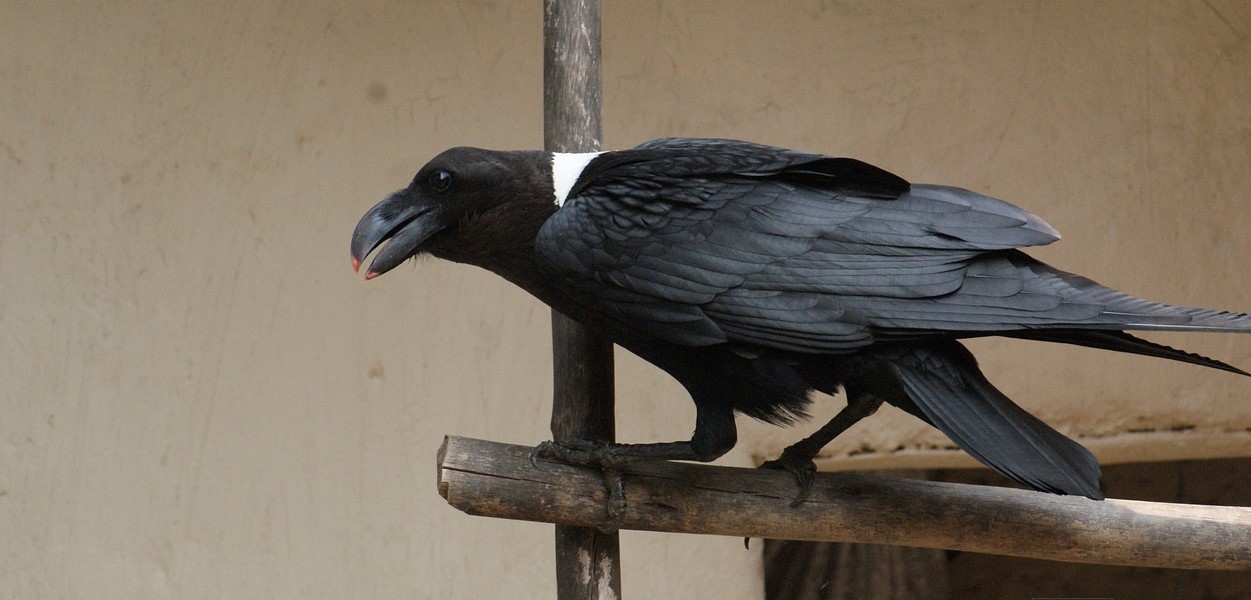
Exploring the White-napped Raven in Uganda
Exploring the White-napped Raven in Uganda: Uganda, which is often credited for its magnificent scenery, varied fauna, and dynamic ecosystems, is also a sanctuary for birdwatchers. Of its many amazing bird species, the White-napped Raven (Corvus alienus) is particularly captivating due to its unique look, rarity, and fascinating behaviour. The White-napped Raven in Uganda provides a rare chance for nature lovers and birdwatchers to see one of Africa’s lesser-known but incredibly fascinating birds.
A Brief Overview
Crows, ravens, and magpies are all members of the Corvidae family, which also includes the White-napped Raven. Uganda is one of its ideal habitats, and it is primarily found in East Africa. This bird, which is distinguished by its brilliant white nape that contrasts strongly with its glossy black body, symbolises a unique combination of beauty and mystery. It is an intriguing topic for research and observation because of its adaptive behaviour and preferred habitat.
Key Identification Features when Exploring the White-napped Raven in Uganda
- Size: Large, about 50–55 cm long, similar to other raven species.
- Plumage: The bird’s glossy black body has a noticeable white patch on the neck, which is particularly noticeable when it is flying or acting territorially.
- Eyes: Dark, perceptive, and expressive eyes.
- Voice: Ravens’ deep, resonant sounds, which have distinctive variants and are frequently reminiscent of caws.
Habitat and Distribution when Exploring the White-napped Raven in Uganda
The White-napped Raven lives in a variety of settings, including semi-arid savannahs, highland plateaus, open woods, and rocky outcrops. It is most commonly found in Uganda’s western and southwestern regions, including certain protected areas and conservation zones. Notable sites include Queen Elizabeth National Park, with its vast savannahs and acacia woods, which is a suitable home for White-napped Ravens. While the Bwindi Impenetrable Forest is most known for its mountain gorillas, it also supports a varied range of bird species, including ravens.
Lake Edward and the Rwenzori Mountains: Elevated habitats and rugged terrain offer suitable nesting sites and foraging grounds.
Behaviour and Ecology while Exploring the White-napped Raven in Uganda
White-napped Ravens are extremely adaptive and intelligent birds. They are omnivorous, scavenging on carcasses, foraging for insects, and even raiding fields or food leftovers near human settlements.
Their social structure consists primarily of tiny family groups or pairs, and they exhibit sophisticated vocalisations and behaviours.
The white-naped raven is typically apparent by specific behaviours such as:
- Territorial displays include the bird puffing up its nape feathers during combat.
- Vigilance and alertness: When looking for predators or food sources.
- Breeding rituals: Mating pairs may perform aerial displays, emphasising their contrasting plumage. Breeding occurs during the dry season, with nests constructed in tall trees or rocky outcroppings to protect eggs and chicks from predators.
Why Observe the White-napped Raven in Uganda?
Despite its striking appearance, the White-napped Raven is more difficult to locate and document than other African corvids. This scarcity adds to its attractiveness for bird lovers and conservationists alike. Observing this bird has several convincing reasons, which include:
The stark contrast between white and black plumage allows for spectacular images and insightful observations.
Behavioural Insights: Its intelligence and social activities explain a lot about avian cognition.
Conservation Importance: As a species with a restricted range in specific habitats, its presence shows the health of specific ecosystems.
How to Plan Your Observation Trip for Exploring the White-napped Raven in Uganda
Successful sightings of the White-napped Raven in Uganda require strategic planning:
Choose the Right Season: The dry seasons (June to August and December to February) tend to be better for birdwatching, as the birds are more active and visibility is clearer.
Select Prime Locations: Visiting protected areas like Queen Elizabeth National Park or the Rwenzori region increases your chances of sighting the species.
Use Guided Tours: Local birding guides with experience in these areas can identify optimal spots and behaviours to look out for.
Bring Proper Equipment: Binoculars, a camera with zoom capability, and field guides are essential tools for capturing and identifying the bird.
Respect Wildlife: Maintain a respectful distance to avoid disturbing the birds, especially during nesting periods.
Conservation and Challenges of the White-napped Raven when Exploring the White-napped Raven in Uganda
While not listed as endangered, the White-napped Raven’s habitat is under threat from habitat loss, agricultural development, and climate change. Conservation activities in Uganda are centred on habitat preservation and raising awareness among local communities about the need of maintaining bird biodiversity. Participating in ecotourism and supporting local conservation efforts will help ensure the long-term viability of this species and its habitats.
Finally, exploring the White-napped Raven in Uganda provides a rewarding experience that combines birdwatching, ecological knowledge, and a deep respect for life’s diversity. Its scarcity and spectacular appearance make it a must-see for serious birdwatchers and wildlife lovers as well. By entering Uganda’s rich ecosystems with awareness and respect, we not only view a remarkable bird but also help to conserve it and the health of the surrounding natural environment.
